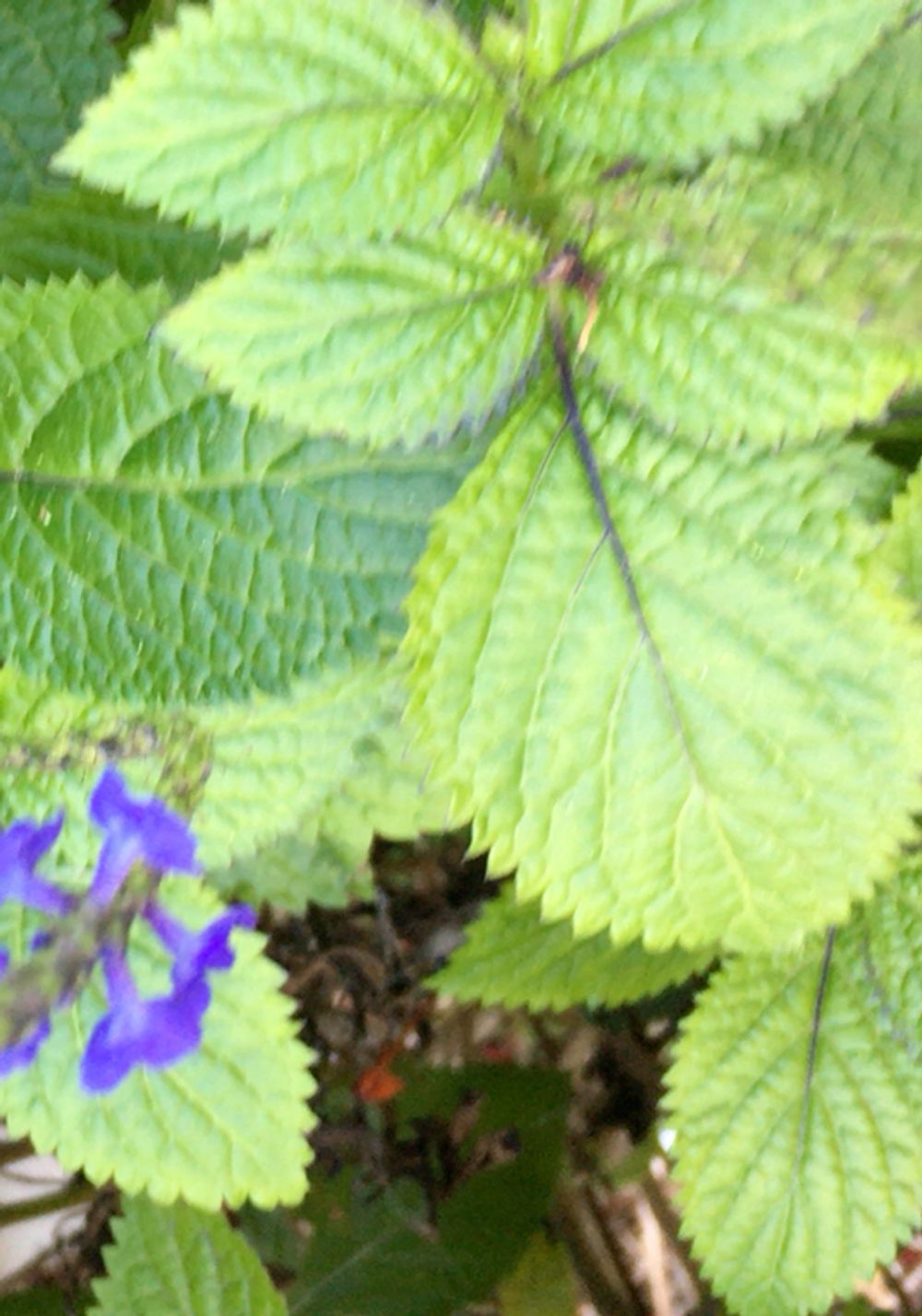Nettle porterweed
(Stachytarpheta cayennensis)

Description
Stachytarpheta cayennensis is a species of flowering plant in the verbena family known by many English language common names, including blue snakeweed, Cayenne snakeweed, dark-blue snakeweed, bluetop, nettle-leaf porterweed, rattail, rough-leaf false vervain,blue rat's tail, Brazilian tea, Cayenne vervain, false verbena, joee, nettleleaf velvetberry,and Cayenne porterweed. Names in other languages include honagas- (Japanese), gerv-o-urticante (Brazilian Portuguese),piche de gato, rabo de zorro (Spanish), herbe - chenille, herbe bleue, queue de rat (French), -i, -w- (Hawaiian), and ti-ki (M-ori). It is native to the Americas, from Mexico south through Central and South America to Argentina, as well as many islands of the Caribbean. It is known in many other parts of the world as an introduced species, including regions in Africa, India, Indonesia, Australia, Florida in the United States, and many Pacific Islands. Its distribution is now considered pantropical. In many places it has become an invasive species. This plant is a perennial herb or shrub growing up to 2 or 2.5 meters tall. It has an upright, branching stem, sometimes with a woody base. The leaves are oppositely arranged. The blades are up to 8 to 10 centimeters long, oval in shape with sharply toothed edges, and rough-textured or wrinkly on the upper surfaces. The inflorescence is a very narrow spike up to 40 to 45 centimeters long covered in pointed bracts. Occasional flower corollas bloom from between the bracts. The flowers are deep purple-blue to lavender with pale centers, and white-flowered plants are known.The flowers last a single day before wilting.The plant was named for Cayenne, the capital of French Guiana. In some places this plant is simply naturalized. It may be a casual weed, a "garden thug", a crop pest, or an invasive species with effects on the local ecosystem. It is well-adapted to disturbed, cultivated, and wasted land. It grows in pastures, on cropland, and on roadsides. In grazed fields it propagates rapidly because livestock find it distasteful, avoid it, and selectively graze out the other vegetation. In rainy areas it can form thick beds, but it easily persists in dry areas.
Taxonomic tree:







